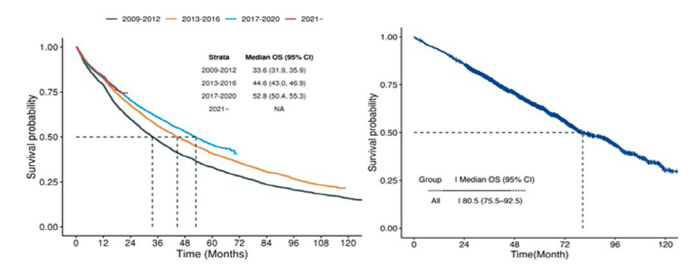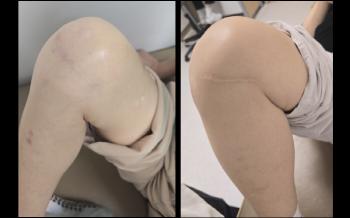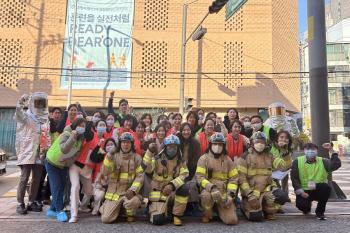Seoul St. Mary's Hospital announces the first results of treatment for refractory blood cancer multiple myeloma...80 months of median survival
|
A team of professors Min Chang-ki, Park Sung-soo, Lee Jeong-yeon, and Byun Sung-kyu of the Multiple Myeloma Center (Professor Kim Hee-je of the Blood Hospital of Seoul St. Mary's Hospital) surveyed a group of patients with multiple myeloma (1291) treated for 12 years and the median survival period (OS) was 80.5 months (2010-2021). This is the first case in Korea to analyze and disclose the results of refractory blood cancer treatment for a long time.
According to the recently released data from the Health Insurance Review and Assessment Service, the median survival period of multiple myeloma patients in Korea is 33.6 months (2009-2012), 44.6 months (2013-2016), and 52.8 months (2017-2020), depending on the start of treatment.
Seoul St. Mary's Hospital is establishing a precise treatment system according to the individual risk of patients through patient-specific treatment design, active use of autologous hematopoietic stem cell transplantation, new drug-based maintenance therapy, and preemptive introduction of the latest immuno-cancer drugs (double antibodies, CAR~T, etc.) for high-risk groups. In addition, it contributes to the management of side effects of chemotherapy and continuous treatment compliance through close management of nurses specializing in blood cancer as well as a multidisciplinary integrated treatment system with various clinical and medical staff, including infectious medicine.
Multiple myeloma occurs in the bone marrow and is a representative blood cancer that occurs frequently following malignant lymphoma and leukemia. More than 2,000 people are newly diagnosed in Korea every year, and the incidence rate is steadily increasing with the increase of the elderly population. According to data from the Health Insurance Review and Assessment Service, the number of patients in Korea who visited the hospital with multiple myeloma (disease code: C90, multiple myeloma and malignant plasma cell neoplasms) doubled from 5,566 in 2014 to 11,219 in 2024. The age group of patients with multiple myeloma in Korea has increased since their 50s, and more than 80% are known to be in their 60s or older.
Multiple myeloma is an incurable disease in which cancer cells invade bones and cause serious complications such as fractures, anemia, and kidney failure. Although the survival rate of patients has improved significantly with the recent development of various treatments, it is still a blood cancer that patients fear because recurrence is frequent and there are many patients who do not respond to existing treatments.
Professor Min Chang-ki (blood medicine department) of the Blood Hospital said "It is not a simple and mechanical treatment that administers anticancer drugs suitable for symptoms, but a strategy of closely managing after treatment along with customized treatment that comprehensively judges individual vulnerabilities of patients has led to good results."In the future, we plan to maintain world-class treatment results for multiple myeloma and further continue research on predicting the treatment response of immuno-oncology drugs" he said."
Professor Park Sung-soo (blood internal medicine) of the Multiple Myeloma Center at the Blood Hospital said, "This survival rate result goes beyond just treatment results and shows how much difference patient-centered integrated treatment and evidence-based treatment strategies make in actual clinical practice. We will continue to develop the best treatment model in Korea that can improve both the quality of life and long-term survival of patients as well as treatment outcomes in the future."
|
This article was translated by Naver AI translator.





